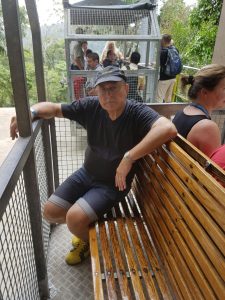
In the early 1970ies, while studying in Munich, I ended up at Siemens AG. I was a working student at Kopp-Strasse. My office was there and our tests were done at the Feurich Building IT Laboratory. The Kopp-Strasse was beyond the “Hofmannstrasse” compound, the Feurich Building inside.
Siemens was a wonderful enterprise. Perhaps it is (was) The German Enterprise.
Our motto was “building high technology for and with everything that is related to electricity”. There were more than 20 sectors, and every one of them did exceptional technological work. We complemented each other in a synergetic way. In addition, the entire enterprise was under excellent business leadership.
In the technological areas, there was an atmosphere of departure. The challenges were never big enough and the solutions were absolute works of genius.
In those days, the directors were very approachable. One of them described his view of his role as follows:
“Most of the more than 25 Siemens AG departments are doing economically very well. There are a few that need a little extra help. It is my job to make those strong again. I am not worried that there will be a day when I no longer have any work, because it is quite normal that another “strong” sector will need a little support at some time”.
To me, that sounded plausible. Such is life, also business life. There is no such thing as continuing top performance. Consequently, it is also quite normal that one sector or another will occasionally need some support.
I admired the economic strength and the exceptional business competence of the enterprise as a total unit. That was something that clearly distinguished us – Siemens – from the competition, such as AEG or Telefunken. As far as D was concerned, also from Nixdorf. And when occasionally some people lovingly and with irony called Siemens “a bank with an electronics sub-sector”, then this was not something I found so bad. It is quite a good idea for an enterprise to have “the funny stuff”.
Their mentality, at least as far as engineering areas were concerned, fascinated me. We worked in the same way as employees at google later told me they worked (during the good years). There were huge technological challenges, a high degree of self-responsibility and a faire error tolerance in case of failure. In addition, they had a clear reporting strategy without any restrictive processes and roles. Those were virtues that catapulted us to the front in technology. And we were (often more than) at eye-level with IBM and the other mostly US competition. The few European competitors had been left behind a long time ago, anyway.
In the late 1970ies, I was a tenured Siemens employee. In 1980, they also sent me to Neuperlach. And then I soon left the enterprise. Because the aforementioned virtues were getting lost.
They defined roles and introduced processes. Bureaucracy became the domineering factor and all decisions were made with a strong consideration of the shareholder value. A huge wave of paralysis was combined with irrational planning approaches, thus making it harder and harder, if not impossible, to work successfully. This is how a great technology went down the river.
After having founded my own enterprise, I did a lot of business with Siemens. Initially this was an excellent situation. Siemens was an honest customer and business partner. I can tell and already have told you many positive stories about it.
In the 1990ies, the climate started changing more and more for the providers, too. The providers came up with a nice German bonmot: “Partnerschaft ist, wenn der Partner schafft“. (If the partner does the work, they call it partnership). This is also something I could tell many stories about.
Then, the distance between me, and the same is true for InterFace, and Siemens grew. As the years went by, I followed the decline of the biggest German enterprise in the third millennium. Thus, the pain I, as an original Siemens person, felt became less and less and was finally relieved to some extent by a morbid joy of seeing a sick system collapse.
Now, in 2018, there are again exciting news from the one-time electronics concern. A new enterprise organisation is under way. They want to become „meaning oriented“. But what exactly does that mean?
Incidentally, all the stakeholders are to benefit – but above all, they mean the shareholders, then to some extent the customers, the people who work in the enterprise, the providers and the external social systems. It seems that Siemens did not learn a lot from what they saw in the last decades, because those decades show that this is not how it works.
The emotional distance between me and Siemens has grown. Today, I can look upon Siemens with more serenity than a few years ago. And I notice:
Again, the employees are verbally made the ”centre“. And there they are more in the way than anything else.
The first priority is given to the shareholder, i.e. the international capital. As I see it, Siemens wants to tread on a path that I already saw several other enterprises take.
You divide an enterprise into two (here: three) parts and take the new enterprises to the stock exchange. As soon as each of the enterprises alone has a higher stock exchange value than the old one ever had – the champagne corks can fly. This is especially true for the capital.
It is a totally different story what will become of the three successor concerns. However, it will have nothing to do with the old Siemens company.
Well, this is neither here nor there, because the times when they said “we produce everything that has something to do with electricity” are history. Which is also true for the other German enterprises that, with their more or less enthusiastic employees (and many guest workers) created the “economic miracle”.
RMD
(Translated by EG

